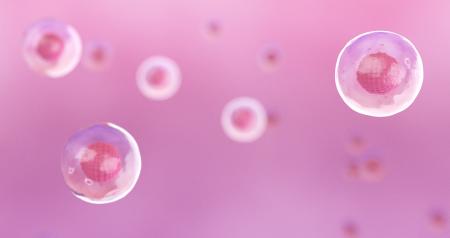Treating Parkinson's disease with stem cells
Parkinson's disease is a chronic neurodegenerative disease that affects especially motor function and movement. The symptoms of Parkinson's disease include tremors, stiffness, involuntary movement, and difficulty walking.
People with Parkinson's disease are facing 3 main challenges:
- Motor symptoms, which include tremors, rigidity, postural instability and bradykinesia, a loss of inability to produce spontaneous movement.
- Cognitive impairment, including confusion, memory loss, difficulty solving problems, and depression.
- Progressive disability that causes significant changes in the quality of life of the patient.Progressive disability that causes significant changes in the quality of life of the patient.
Regenerative stem cell therapy for Parkinson's disease
Regenerative medicine in the form of pluripotent stem cell therapy for Parkinson's disease patients aims to restore function of the brain cells and dopaminergic cells, replenish neurochemical pathways to improve dopamine release, reactivate neural progenitor cells, grow healthy stem cell-derived dopamine neurons, and signal whole body repair in each individual patient. Although environmental factors and genetic risk factors may play a role in advanced disease, pluripotent stem cell signaling and the reparative sequelae can make a big difference.

Parkinson's disease Treatment Plan
Our treatment plans generally last between 2 and 5 weeks, depending on your overall health, your condition, and the severity of your Parkinson's disease symptoms. Anyone can sign up for stem cell treatment for Parkinson's disease. Each stem cell treatment candidate will receive a tailored plan to help achieve the highest success rate for maximum therapy efficiency. Typically, stem cell therapy for Parkinson's disease will resemble a program such as the one below, and will last for 4 weeks of daily treatment followed by 6 months of weekly treatment.

Stem cells
20 stem cell IVs

Plurisomes
4 Plurisomes IVs

Peptides & Nutraceuticals
20 IVs

Chelation
20 IVs

Ozone
4 sessions

Physiotherapy & Massage
8 sessions
Treatments
- Anti-Aging
- Alzheimer's disease
- Arthritis
- Back Pain
- Brain Injury
- Cerebral Palsy
- COPD
- Diabetes
- Fibromyalgia
- Heart disease
- Knees
- Guillain Barré Syndrome
- Lyme disease
- Multiple Sclerosis
- Neck Pain
- Nerve Damage
- Neuropathy
- Opioid Addiction
- Pain Management
- Parkinson's disease
- Post-Viral Syndrome
- Pulminary Fibrosis
- Rheumatoid Arthritis
- Scleroderma
- Shoulder Pain
- Facelift
- Stroke
- Treated by Stem Cells

Benefits of stem cell therapy for Parkinson's disease patients
Benefits of stem cell therapy for neurological diseases vary depending on stem cell approaches and the severity of the condition. At Stemaid Institute, we utilize the most comprehensive pluripotent cells. These type of cell replacement therapies are unique in that they signal repair in all parts of the body, and can repair the nerve tissue in the brain and in the periphery, including dopamine-producing neurons, restore balance amongst immune cells and help recover the lost cognitive and motor function.
Because we utilize stem cell types that we can culture in our laboratory, instead of extracting adult human mesenchymal stem cells (adult stem cells), bone marrow stem cells, we completely avoid the potential risk factors, adverse events and side effects associated with these cellular therapies.
With pluripotent stem cell treatments, it is possible to achieve neurological recovery of functional neurons and dopaminergic neurons and recovery of body and motor function. With each injection, repair mechanisms are triggered and the patient's brain starts to produce new connections and reactivation of neural stem cells.
-
Reduced Inflammation
One of the key beneficial effects of stem cell treatment is immune regulation. The immunomodulatory effects of hESC treatment are critical in easing symptoms. Pluripotent stem cells and exosomes release transcription factors that help immune cells to shift away from TH1 autoimmune reactivity. Detoxification IVs and anti-parasite treatments also assist the healing. This calms the fire in the brain and allows for dopamine-producing neurons to repair and grow.
-
Motor Function Improvement
The second level of therapeutic effects is usually observed after a minimum of 3-4 weeks, when inflammatory fire is quenched and the dopamine neurons begin heal. The neuron is a complex cell, and the human dopamine neuron requires time to regenerate. Over time, the tremors, rigidity, instability and bradykinesia begin to show sign of easing. Motor fluctuations can occur from day to day, but overall motor scores steadily improve.
-
Improvement in Quality of Life
A major challenge in healing from Parkinson's is improving quality of life. This condition is disabling both cognitively and physically. Current treatments in regenerative medicine do their best in supporting patients in living better longer with this condition. Pluripotent cells release their signaling factor molecules for months post-treatment, and work on reprogramming all tissues for self-repair. As motor function improves, and cognition ameliorates, the patients become once again more independent and quality of life improves.
hESC treatment with pluripotent factors, like the one being utilized at Stemaid Institute, is now recognized as the most potent whole body repair and rejuvenation treatment strategy. The effects are seen gradually, with highest protective effects between 12 to 180 days post treatment. This is a long term treatment. The epigenetic reprogramming that occurs with pluripotent cellular therapies is the next frontier in regenerative medicine for neurological disorders.
In addition to our standard line, autologous cell transplants of pluripotent stem cells is also possible with Stemaid Laboratories Autologous Pluripotent Stem Cell line. These type of human cells are produced from your own human fibroblasts and contain your own DNA, and thereby graft well. These type of transplanted cells lead to formation of autologous stem cell-derived dopamine neurons in the brain, considered the most potent and long lasting solution.
Initial studies and preclinical studies show promise in treatment of neurological conditions, even in advanced disease. Motor scores and cognitive scores steadily improve in neurological disease in patients seen at Stemaid Institute.
The current status of Stemaid stem cell clinical trial options is pretrial. Clinical studies and human trials using pluripotent stem cells will initially assess markers of biological aging. The epigenetic reprogramming that occurs with this type of disease-modifying treatment has direct positive effect on aging mechanisms we believe will directly shed light on brain health, motor function and treatment of neurological diseases. Environmental factors and genetic factors, although fraught with logistical challenges, and how these affect the success of pluripotent stem cell therapies are also of interest in future study designs.
References and Literature
1. Stem Cell Treatments for Parkinson’s Disease
2. Replacing what's lost: a new era of stem cell therapy for Parkinson's disease - PubMed
3. The promise and potential of stem cells in Parkinson’s disease - Nature
4. Pluripotent Stem Cell-based therapy for Parkinson’s disease: current status and future prospects


